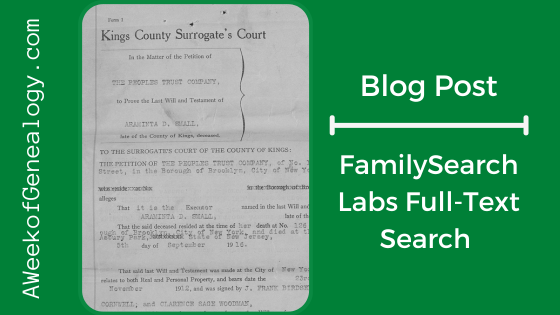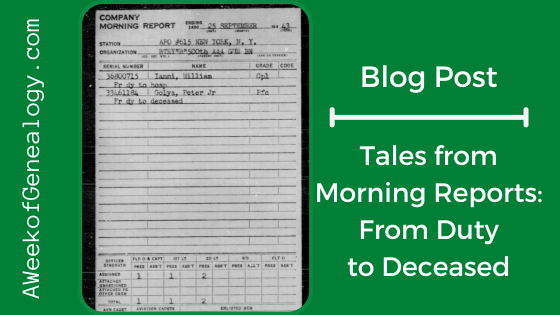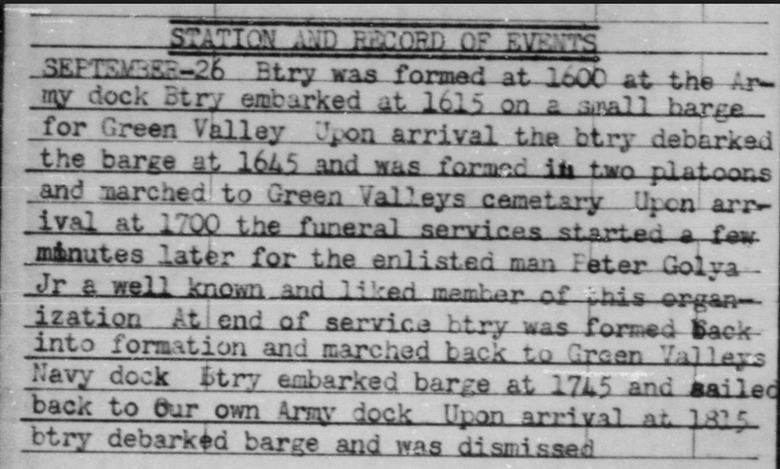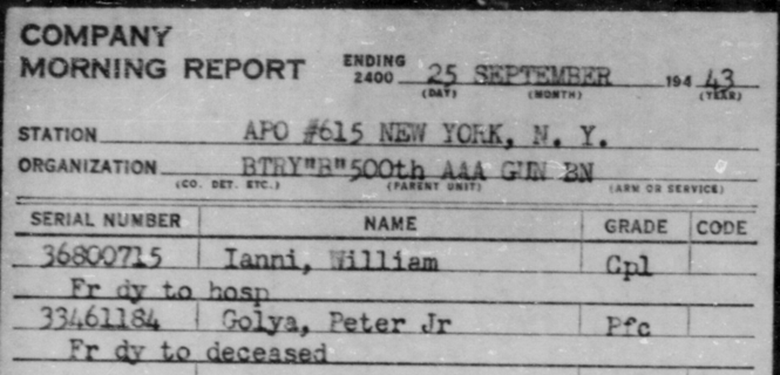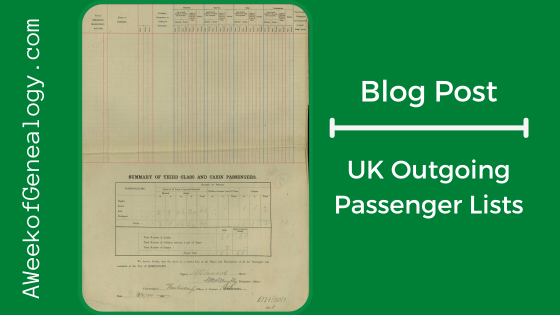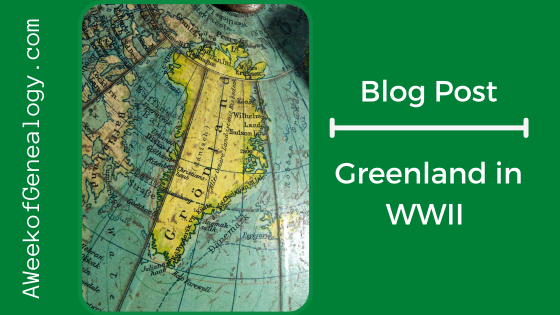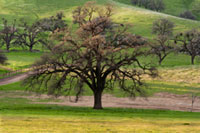Finding Amelia Small in FamilySearch Full-Text Search
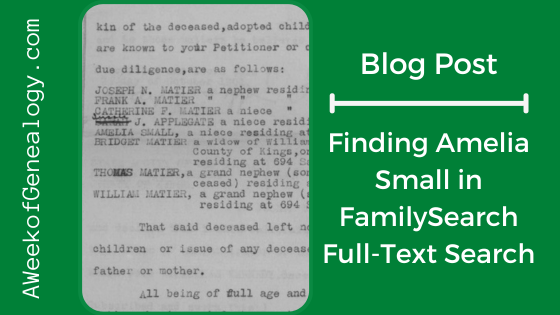
Researching an Irish family in New York City can have its challenges. Some surnames were very common, and traditional naming patterns often resulted in many individuals with the same names across different branches of the same family group. The passenger lists of the mid- to late-1800s contain little identifying data. It can be difficult to trace these ancestors back to their place of origin in Ireland. With these challenges, one strategy to unravel the stories is searching for family units rather than individuals. The other strategy is to use collateral research.
Of course, I have searched through the unindexed probate and land records available on FamilySearch, but the indexes built into those records will only show the name the name of the main subject. The text of these documents may contain other names and events, and the Full-Text Search helps you find them!
I have been entering the names of these mysterious ancestors into the Full-Text Search and recently had a success connecting one ancestor to another relative who came to the US. This might open an opportunity to do collateral research. You can view a previous blog post describing how to use this tool at FamilySearch Labs: Full-Text Search.
I began at https://www.familysearch.org/labs, and entered the name my ancestor Amelia Small in the search box. Since this search focuses on pattern matching, remember to search for a woman’s birth name and married name. As a reminder, Full-Text Search works better by entering the person’s name between quotation marks into the Keyword field (rather than the Name field).

One of the results was intriguing. My ancestor Amelia Small’s name appears in a probate record, and the address is where she resided.

Clicking on the record collection name at the top of the result opened a new tab with the record and the full transcript. The search terms were highlighted.

ChatGPT offered a better formatted transcription of the text:
…kin of the deceased, adopted child or children, as far as they are known to your Petitioner or can be ascertained by him with due diligence, are as follows:
JOSEPH N. MATIER, a nephew residing at 226 Bridge Street
FRANK A. MATIER, a nephew
CATHERINE P. MATIER, a niece
CASSANDRA L. APPLEGATE, a niece residing at Gravesend, L.I.
AMELIA SMALL, a niece residing at #364 Hart Street, Brooklyn.
BRIDGET MATIER, a widow of William F. Matier, who died at the County of Kings, on the 24th day of October 1901, residing at 694 Sackett Street, said Borough.
THOMAS MATIER, a grand nephew (son of William F. Matier deceased) residing at 694 Sackett Street, Brooklyn.
WILLIAM MATIER, a grand nephew (son of William F. Matier) residing at 694 Sackett Street, said Borough.
Amelia Small was an heir! I recognized her siblings from the family structure, and from the address listed for her. A list of heirs can be valuable, and in this case, it provided siblings’ addresses, women’s married names, and even a sibling’s death date.
Amelia was the niece of the subject of this document. I followed the back arrow to see the first page of the Application for Letters of Administration for the deceased, Thomas Kennedy, who had died intestate (without a will).
From Amelia’s death certificate I knew the names of her parents, William Matier and Mary Kennedy, both born in Ireland. Some pieces were falling into place. This suggests that Thomas Kennedy was Amelia’s mother’s brother.
There was some other information on that first page.

Thomas Kennedy had died at the Abbe[y] of Gethsemany [sic], Nelson County, Kentucky, on the 25th day of September 1901. This raised questions of whether he was a monk, a priest, or a visitor at the Abbey of Gethsemani is a Trappist Monastery located in Trappist, Nelson County, Kentucky.
While this document contained the explicit information (given by his nephew) that Thomas Kennedy had no wife or children, there might be other avenues to trace his life and connections.
There will be more in this blog to share what more was learned about Thomas Kennedy, and how it was learned.

